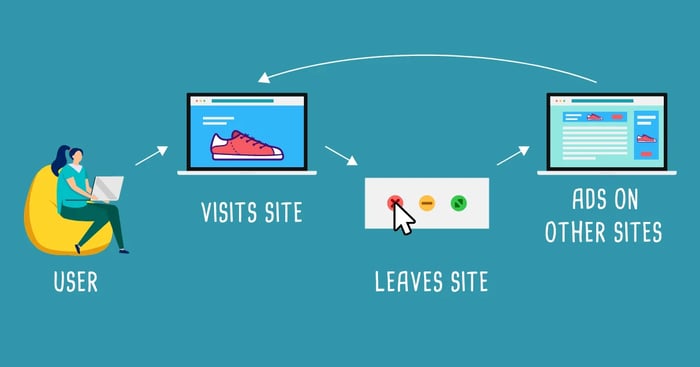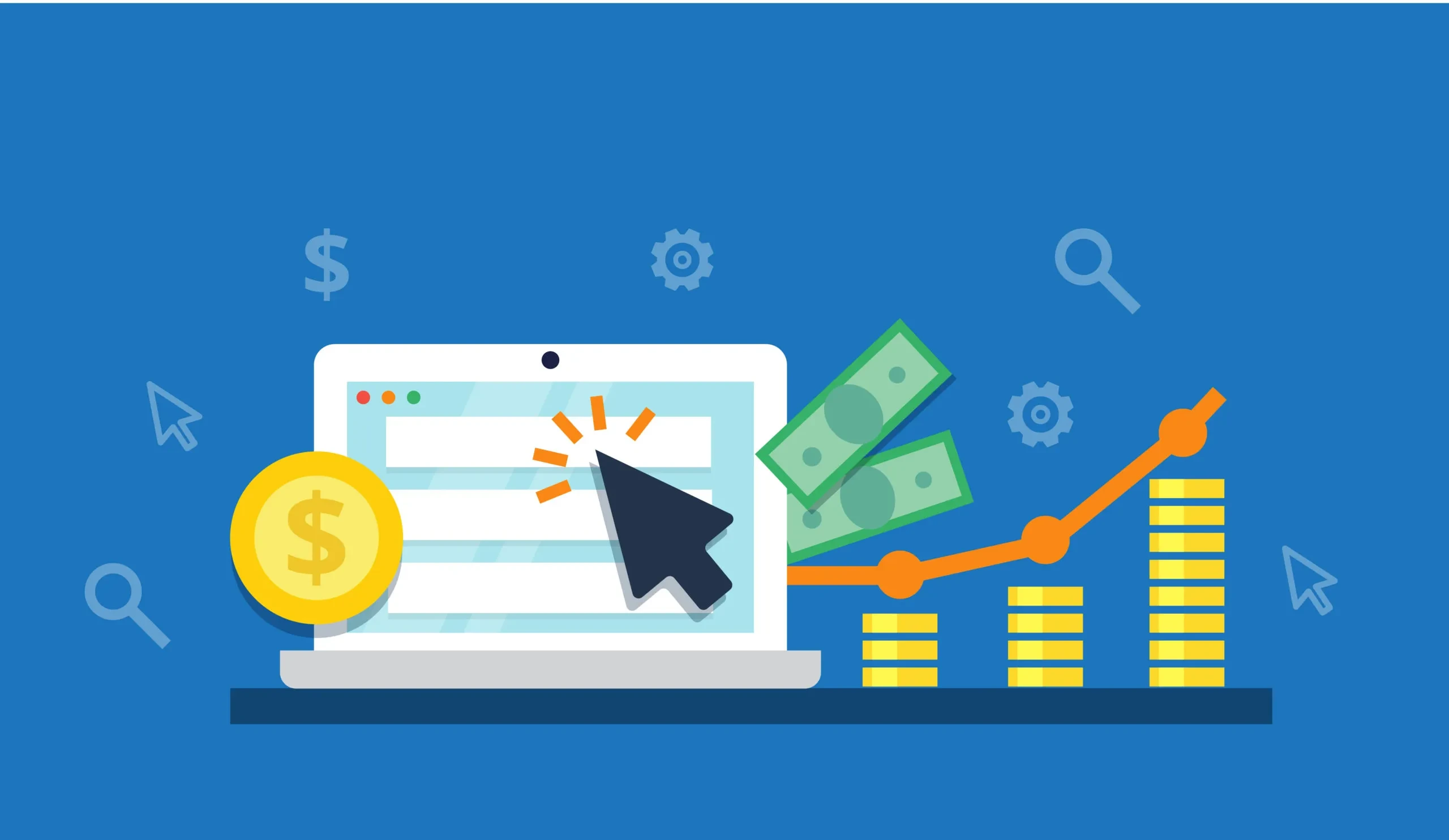Your Full Guide On How To Lower CPC With 20 Proven Tactics
As you become involved in the e-commerce landscape, you have definitely come across the term cost per click.
And just as it sounds, cost per click (CPC) is a metric that measures the amount of money paid on ads compared to the number of clicks received.
To calculate CPC, you divide the total amount spent on the ads by the total number of clicks. Accordingly, if the ad spend is 100$ and the number of clicks is 10, then the CPC is 100/10= 10$ (Which is a huge number).
Hence, one of the key issues that any online business faces is generating the maximum revenues from the amount of money spent on ads. A vital key metric used to measure the effectiveness of the ad spend is CPC, and here comes the importance of decreasing it.
Most people would think it’s easy to lower CPC; just spend less!
Well, that is too good to be true as we wished it was that simple. Initially, spending less on your ads will massively affect your desired results. Thus, you need to work the other way around. This means you need to set a clear budget and work on increasing the number of clicks.
This may be a tough job for any business. So, in this article, we are providing you with not just 10 or 15 but TWENTY tactics to lower CPC. Yes, you heard that right, 20 tactics!
Search no more, as this article will provide you with a full guide like no other.
So, stay ahead of the curve by continuing to read our article.
Table Of Content
- Improve Your Quality Score
- Improve The Quality Of Your Landing Page
- Increase Your Click-Through Rate
- Improve Ad Relevancy To Avoid Irrelevant Traffic
- Don’t Leap For The Cheap Keywords
- Target Long-Tail Keywords
- Include Negative Keywords
- Geo-Targeting
- Choose The Suitable Timing
- Identify The Right Device
- Use the “Maximize Clicks” Bidding Strategy
- Consider Manual Bidding
- Utilize New Keyword Match Types
- Focus On Retargeting
- Create Specific Ad Groups
- Never Ignore A/B Testing
- Display Social Proof
- Use Frequency Capping
- Create Attention-Grabbing Ads
- Monitor And Optimize
Average CPC Across Different Platforms
According to Business of Apps (2024), the benchmarks for CPC across different apps are as follows:

How To Lower Cost Per Click (CPC)?
Having a low CPC means that you are maximizing your benefits compared to the amount of money paid on ads. Also, more clicks mean more traffic and higher conversion rates.
Therefore, it’s essential to know how to lower CPC as it’s one of the starting points to the success of your e-commerce. So, let’s see tactics to lower CPC.
1- Improve Your Quality Score
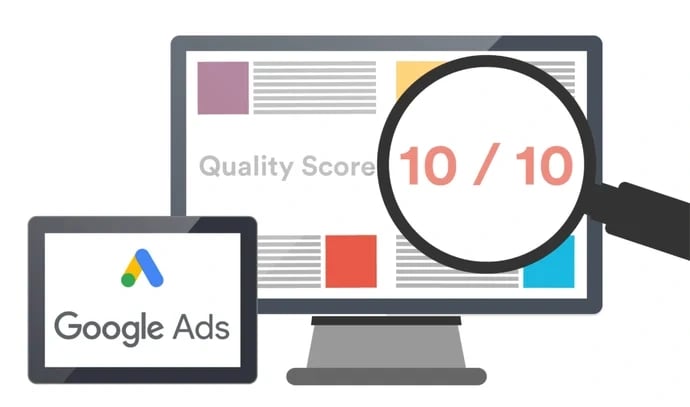
As we speak about pay-per-click ads, it’s crucial to go through the quality score. The quality score is usually noticed on Google Ads, and it’s linked to the quality of your ads and your landing page. Thus, the higher your quality score, the more visibility is granted to your ads, better ad positioning, and, most importantly, lower cost per click.
If you are wondering how to lower CPC, improving your quality score is one of the first tactics to follow.
Improving it requires focusing on three main dimensions.
- Ad relevance and quality: Is your ad compatible with users' search intent?
- Anticipated Click-through rate: Are users going to click on your ad?
- Landing page quality: Is it well-designed and user-friendly?
Google always focuses on the quality of ads and search results delivered to its users. As a result, a good score indicates an outstanding performance of your content, which means higher visibility and, consequently, more clicks.
2- Improve The Quality Of Your Landing Page
Let us tell you that it’s all like a cycle. You need to improve the quality of your landing page to receive a better quality score, which contributes to decreasing CPC.
Yes, it’s that simple ( or we hope so).
But anyway, an optimized landing page is one of the key tactics on how to lower CPC. There are plenty of aspects that need to be available on a high-quality landing page. For instance, it has to be aligned with your ad copy and the objectives of your ad.
Also, improving the load time of your landing page is of vital importance. In addition, being mobile-friendly and having a clear CTA are key dimensions.
3- Increase Your Click-Through Rate (CTR)
Continuous improvements are the key to success. This is also the case in e-commerce, especially in how to lower CPC.
A pivotal metric that is strongly linked to cost per click is the Click-through rate (CTR). The CTR indicates the percentage of people who click on your ad. A high CTR shows the effectiveness and relevancy of your ads.
Therefore, the CTR is one of the key elements that contribute to improving your quality score. The relation between CTR and CPC is perceived as a seesaw effect; an increase in CTR leads to a decrease in CPC.
To increase your CTR, you need to follow some procedures, including a clear call to action, better ad copy, and monitoring your ad frequency so the ad is not shown to the same customer multiple times.
4- Improve Ad Relevancy To Avoid Irrelevant Traffic
The relevancy of your ads is significant for improving your quality score which eventually reflects in lowering CPC.
The consequence of ad irrelevancy is that it brings invalid traffic. Subsequently, it leads to high bounce rates, low conversion rates, and losing the cost of each click from irrelevant customers.
It’s worth mentioning that for every click from an irrelevant customer on your ad, you lose one less click from a real, potential customer to your ad. Hence, the value of your money goes for nothing.
As a business aiming to lessen CPC, ad irrelevancy will consume your budget while being directed to the wrong customers. And, back to our first point, it will lower your quality score too.
Facebook ads, for example, lower CPC and prioritize ads with high relevance scores. This indicates the importance of such an aspect for the effectiveness of your ads.
5- Don’t Leap For the Cheap Keywords
Don’t fall for the quick fixes that encourage going for the cheap keywords to lower CPC.
Your choice of the right keywords can make or break your ads. Therefore, the choice has to be based on the search volume, relevancy, and purpose of the keywords. This means that if a keyword brings high search volume but it’s expensive, you still have to continue with it or you will be jeopardizing huge traffic with a high possibility of conversion.
So, the point is, don’t leap for the cheap keywords. They deliver the illusion of decreasing cost per click. However, in reality, you are just spending on cheap, weak, irrelevant keywords that are not driving high search volume.
Thus, it’s all about creating a balance between cost and search frequency.
6- Target Long Tail Keywords
As we always say, the competition in the e-commerce realm is intense. This makes the visibility of your ads and the click-through more challenging. Hence, one way to lower CPC is by targeting long-tail keywords.
To explain this, there are short keywords and long tail keywords. For example, necklace is a short keyword while silver necklace with diamond stones and adjustable chain is a long keyword.
You might wonder how a long, detailed keyword grabs more clicks. At first, we thought the same way too. Yet, when we did our research and hit the books, it turned out that long-tail keywords are much cheaper, have less competition, and drive more targeted traffic.
They generate more qualified traffic with specific audiences in an advanced stage in their buyers’ journey.
Accordingly, resorting to long tail keywords helps your e-commerce stand out with its ads among fierce competition and lowers CPC.
7- Include Negative Keywords
The negative keywords are phrases you “don’t” want your ads to appear for. Just like you exert efforts to identify the right and relevant keywords for your PPC ads, you need to consider the negative keywords as well.
They play a pivotal role in increasing the relevancy of your ads and avoiding unnecessary clicks by users, which are very costly.
To avoid such a scenario, including negative keywords becomes essential. So, if you are selling diamond necklaces, your negative keywords can be “cheap necklaces” or “non-gemstone necklaces”.
Users interested in cheap necklaces will never be interested in the diamond ones you are selling. Yet, they can still click on your ads, which is certainly inconsistent with our tactics on how to lower CPC.
You can expand the list of negative keywords as much as you need. Thus, ensuring better ad targeting and reaching the right audience who are interested in your products.
8- Geo-targeting
When questions arise on how to lower CPC, we advise businesses to start considering elements as important as the keywords and the budget. One of these elements is the location or, in other words, geo-targeting.
You have to do some research to determine the locations in which the largest number of potential customers are present. Hence, you need to narrow down the locations of running your ads for more effectiveness.
Some businesses assume that expanding the geographical location brings more leads and clicks. However, this is not how things work. Such geographic expansion brings more customers but they are not of big use as they might not be interested in your products.
So, geo-targeting is essential to bring more relevant clicks, which is one of the key elements to lower CPC.
9- Choose The Suitable Timing
Detecting the most suitable timing for bidding ensures better results for your ads. You don’t want to spend money on running ads that appear during inappropriate times, for example, during working hours or sleeping time.
Even though this might seem like no rocket science, businesses might oversee such an aspect. However, it’s a vital aspect and a simple one too that can easily lower your CPC.
10- Identify The Right Device
Similarly, identifying the most commonly used devices enables your e-commerce store to pinpoint those with the highest interaction.
For example, if conversion rates occur from desktop devices, your bidding strategy has to be adjusted based on this device.
Accordingly, you will be able to bid at the right time and in the right place for the right device to deliver the highest number of clicks possible with the lowest cost.
11- Use the “Maximize Clicks” Bidding Strategy
Everything is automated nowadays, and we can’t argue about the benefits automation brings to any e-commerce.
For instance, Convertedin, with its marketing automation system, uses shoppers’ data and insights to deliver multichannel marketing that upscale the performance of your e-commerce and boost customer engagement and sales.
As for PPC ads, using the “maximize clicks” in the automated bidding strategy can go a long way on how to lower CPC.
Such a tactic works as follows: you set your budget, and then Google ads will ensure that you receive the maximum clicks with the available budget.
Et voila!
You run ads automatically while receiving maximum clicks per your daily budget. We are sure this is any marketer’s dream. Simply, more clicks with the same amount of money.
Yet, automatic bidding doesn’t always work out successfully. It’s a good one when you are not sure about the right keywords, but you're aiming for the highest number of clicks.
So, it can do that for you while sticking to a determined budget. Before using it, you have to be sure that it’s a suitable bidding strategy and consistent with your goals.
12- Consider Manual Bidding
It’s undebatable that automation in its various forms is taking the e-commerce landscape by storm.
However, when talking about how to lower CPC, you sometimes need to switch to the old school through manual bidding.
Usually, automatic bidding is users’ go-to. Running their ads is placed on autopilot as Google, for example, suggests what is the best for you.
In contrast, manual bidding enables online businesses to choose the most suitable and relevant keywords that bring the maximum return. In addition, if the ads are low-performing, manual bidding enables you to interfere to make the necessary adjustments. Such an option is not easy to achieve in automatic bidding.
Thus, automatic bidding is undoubtedly beneficial as it frees your hands from running the ads. Yet, when talking about decreasing CPC in times of low-performing campaigns, manual bidding must be considered.
13- Utilize New Keyword Match Types
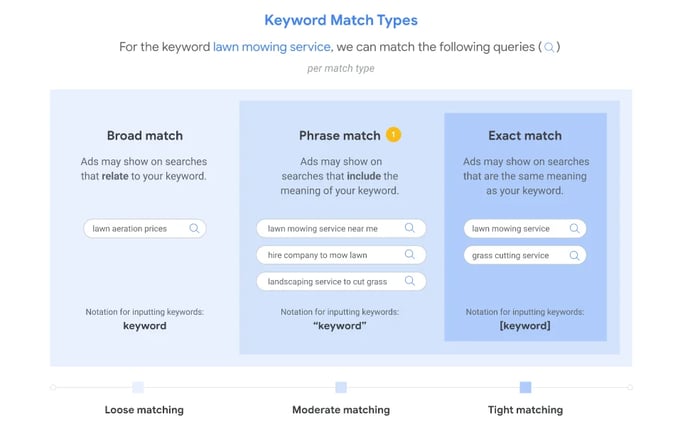
When customers start their search query, the results shown are based on different dimensions. So, here come the keyword match types that identify the level of similarity needed between the user’s search query and the keyword to activate your ad.
Although this field is vast, keyword match is generally categorized into three types:
- Broad Match, which shows ads based on searches related to your keyword.
- Phrase Match, which shows ads based on searches that include the meaning of your keyword.
- Exact Match, which shows ads based on searches that are exact to your keyword.
As an e-commerce store aiming to lower CPC, you will have to utilize different keyword match types. As for the broad match, it reaches a wider audience compared to the exact match which is more narrow and targeted.
However, the CPC in the exact match tends to be more expensive than the broad match. Accordingly, a merger between the different types will deliver the maximum value for your e-commerce. Thus, you have to constantly monitor the performance of the different keyword match types and act accordingly.
14- Focus On Retargeting
E-commerce Re-targeting is a marketing tactic that involves re-engaging with users and showing ads to those who already visited your website but didn't convert on the first visit. These customers are of huge potential as they already expressed their interest in your products, yet, they didn't complete the final step of converting.
Wondering how to lower CPC, re-targeting is certainly a winning tactic. All you have to do is re-display your ads to users who already show interest in your products and are more likely to click through your ads.
This way, you are investing in your potential customers rather than seeking new ones who might not be interested in your business; hence, lower CPC.
Re-targeting can be easily done by having a proper marketing tool. Our top choice is Convertedin. With its advanced technology, it retargets customers who walk away and re-engages website visitors to get a high ROAS. Simply put, Convertedin gets the job done to ensure maximum benefit for your online business.
15- Create Specific Ad Groups
The one-size-fits-all marketing tactics belong to the past. Therefore, if you are selling different products, you have to create specific ad groups.
This ensures that your ads reach the right audience, increase relevancy and CTR, and lower cost per click.
For instance, if you are selling clothes for different age groups, you have to create specific ad groups with different keywords that direct to different landing pages.
16- Never Ignore A/B Testing
You know what they say: practice makes perfect. But we are here to tell you that to lower CPC, trial and error is what makes perfect.
In the e-commerce and marketing world, this is called A/B testing. This means creating various ads with different adjustments to test which is the one with the best performance.
Hence, you can create two ads with different ad copy to evaluate which leads to more clicks and better conversion rates. As a result, you will go for the one with the better performance, which will enable your business to lower CPC.
17- Display Social Proof
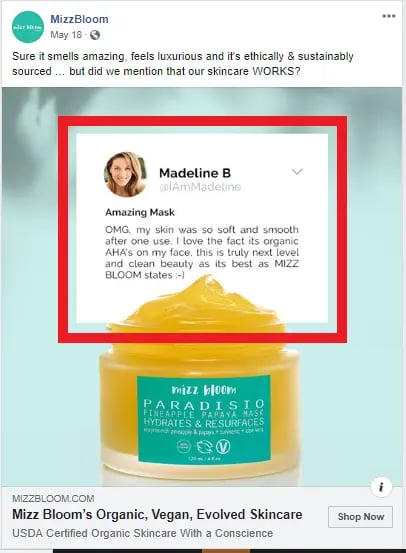
Social proof is a psychological phenomenon that indicates that shoppers seek confirmation from others and tend to imitate them.
Generally, several practices can be used to showcase social proof. For instance, sharing customer reviews and feedback or showing the number of buyers who trust your brand are widely known social proof practices.
These practices increase your brand credibility and trustworthiness. This is indeed part of what you need to encourage users' clicks.
By displaying social proof in your ad copy, you remove any doubts so users become more inclined to click through your ad. In other words, you validate the customer’s buying decision.
A study has shown that ads that include customer reviews lead to a 50% reduction in cost per click and cost per acquisition (Influencer Marketing Hub,2024).
18- Use Frequency Capping
The more effective your campaign is, the lesser your CPC. One way to have more effective ads is to use the frequency capping. It’s a feature for managing ads that limits the number of times an ad is displayed to the same person over an amount of time.
Showing ads repeatedly to users who are not interested in your products may lead to opposite results. They will get annoyed with your ads and might be forced to click on them to eliminate such repetition.
This is certainly inconsistent with your efforts to reduce CPC. The click of an uninterested user will cost you money and won’t lead to conversion. So, it’s costly for nothing.
Hence, using a frequency cap will allow you to get over such an issue. Some might get confused between using the frequency cap and retargeting, which we mentioned earlier in our article.
Both tactics are not mutually exclusive which means that you can use both tactics. However, the key to their success is to be reasonable in the number of times in which your ads are shown to users.
Such a balance ensures that you retarget potential customers while at the same time avoiding provocative repetition.
19- Create Attention-Grabbing Ads
People spend lots of their time scrolling through their phones and getting exposed to various types of content.
It goes without saying that customers get exposed to hundreds of ads. Thus, you have to create attention-grabbing ads that can stand out among such noise and tough competition.
Regardless of the channel you are using, your ads have to be appealing. Accordingly, include attractive visuals, relevant ad copy, and high-quality ads. This will ensure that customers notice your ads and ignite their curiosity to click as well.
20- Monitor And Optimize
Just like all of your marketing efforts, you have to monitor the performance of your PPC ads and optimize accordingly.
Monitoring performance will enable businesses to detect if certain keywords are under-performing and need to be changed. These keywords are increasing the cost per click. Therefore, you will need to direct your budget to more effective ones.
Accordingly, regular review of campaign performance leads to making necessary adjustments to optimize for lower CPC.
Final Thoughts:
We are not exaggerating when we say we have got you covered. With our full guide, you are now ready with 20 tactics to guide you on how to lower CPC.
Working with ads, especially PPC ones, might be tricky, but we are sure that you got this one.
Last but not least, you can now manage your ads across different channels with one tool which is Convertedin.
Convertedin is a marketing automation tool that enables your e-commerce to automate its ads strategy across different channels like Google, Facebook, and Snapchat.
In addition, you will get a complete view of your ads with customized insights to allow you to launch campaigns with the best-performing elements.
If you are struggling with running your ads, Convertedin is your choice.
Don’t waste time; book your demo now!
 By
By
